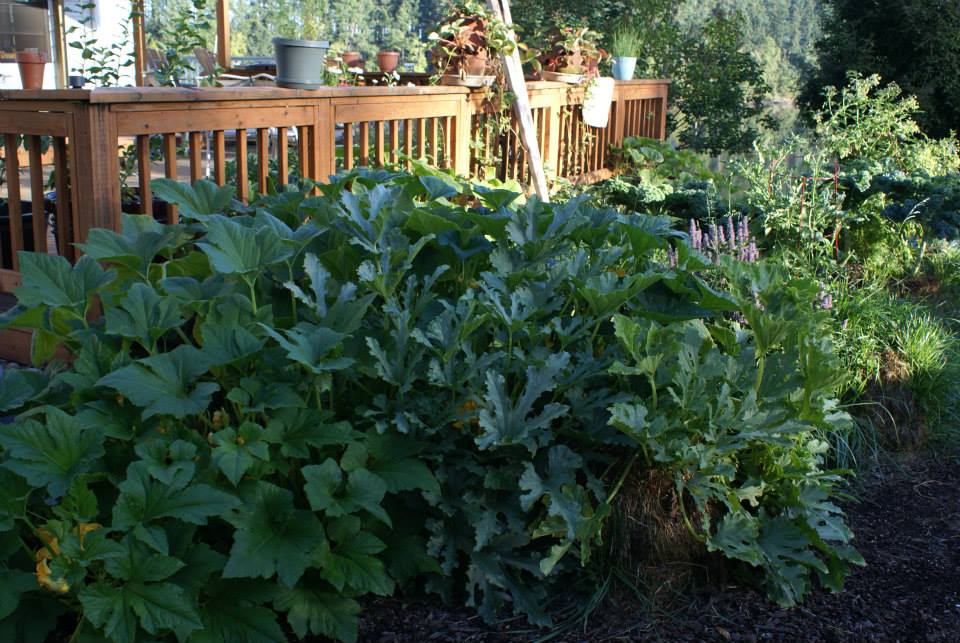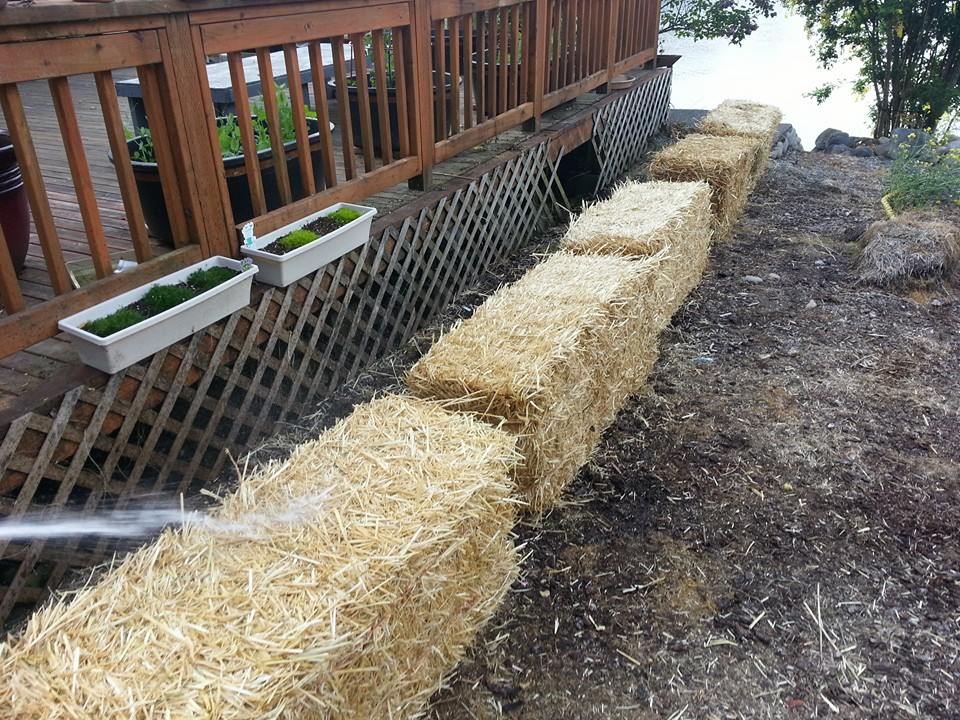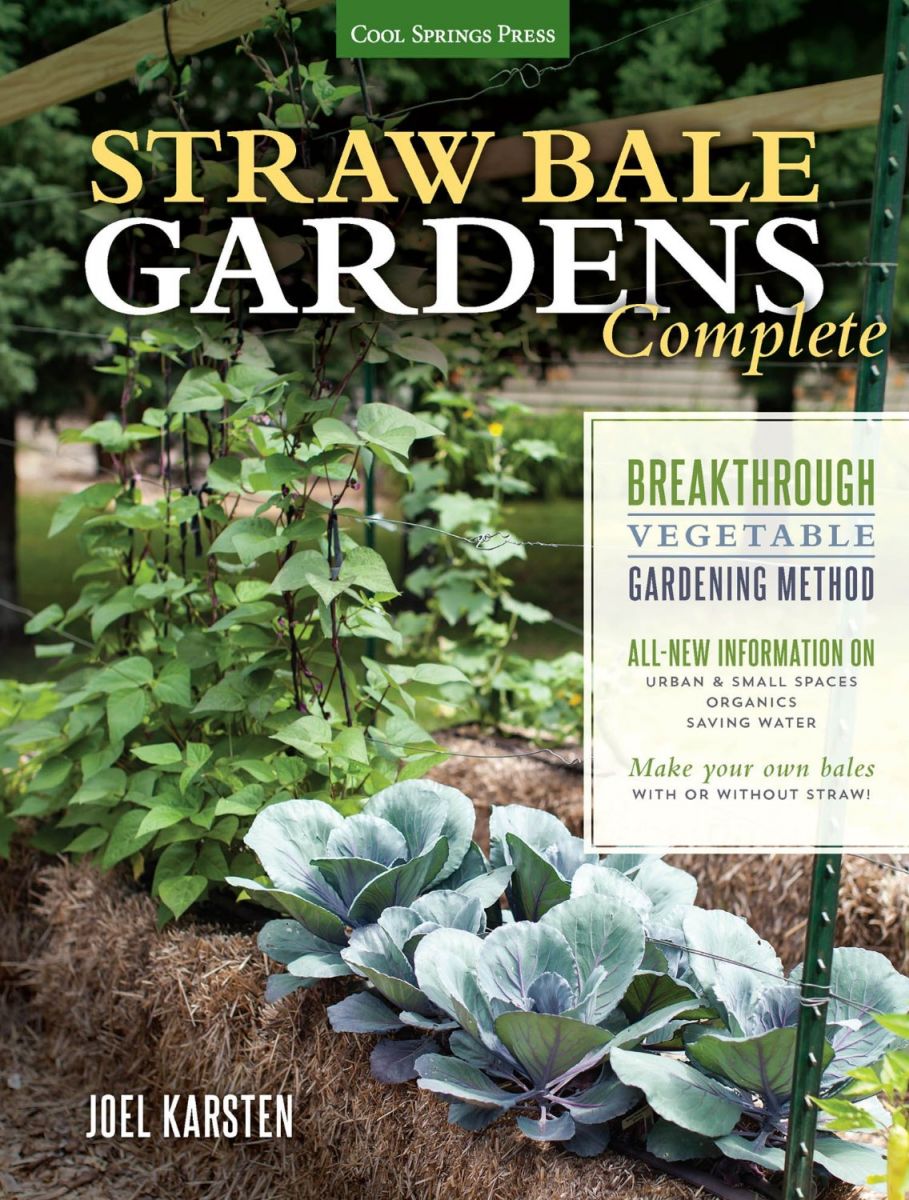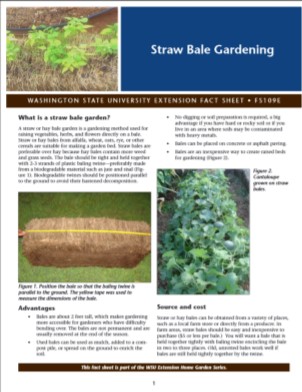Secrets of Straw Bale Gardening

Wow! What a fantastic weekend we just had here in Washington! Farmers and gardeners alike were out in the beautiful sunshine, planting their first crops or at least preparing their ground. I know I got a little more sun than I should have, but I loved every minute of it!
One of the first things I did this weekend was teach a class on straw bale gardening (SBG) for the WSU Master Gardener Program of Thurston County. I’m a big advocate of gardening in straw bales and I love seeing the wonder in the eyes of people as they learn that they can actually grow their vegetable garden in straw bales!
WHY GROW IN STRAW BALES?
 I don’t have a place to plant in the ground, so all of my gardening has to be in containers. But purchasing large containers and filling them with soil was rapidly becoming very expensive! Through some research, I discovered straw bale gardening, which could rapidly increase my planting space with a much smaller impact to my wallet. However, I quickly found many reasons why straw bale gardening is so fantastic:
I don’t have a place to plant in the ground, so all of my gardening has to be in containers. But purchasing large containers and filling them with soil was rapidly becoming very expensive! Through some research, I discovered straw bale gardening, which could rapidly increase my planting space with a much smaller impact to my wallet. However, I quickly found many reasons why straw bale gardening is so fantastic:
- Gardening at knee-height: I’m 6’ 1” and straw bales generally come up to my knees! That means I can garden without breaking my back. This is also great for people with limited mobility or who are in wheel chairs. You can have a raised garden bed without any construction!
- Reduced pests and diseases: Because you are not growing in soil, you don’t have to worry about pests and diseases that may exist in your garden’s soil. You can also forego crop rotation if you plant in new bales each spring!
- Environmentally friendly: Straw bales are basically leftover parts of the plant (the stem) from wheat, barley, or oat crops. SBG is a great way to use these farmer’s “leftovers” to grow more food! And when you are done, you can use any remaining straw as mulch or add it to your compost pile.
- Get a jump on growing: Straw bales are decomposing as you grow, which puts of heat. This keeps your plants’ roots warmer and allows you to start planting up to two weeks earlier than you would be able to compared to planting in the ground. The extra warmth also assists in improved seed germination.
I could go one and on about the awesomeness of SBG, but you get the idea.
STARTING YOUR OWN SBG
If you would like to try SBG, here are some basics of what you need to do to get started.
- Plan: What would you like to grow? Pick things you and your family enjoy! Determine how much you can grow on a bale and how many bales you will need. Where will you place your bales? You can put them in your yard, on cement, or even in your driveway! For more thoughts on planning, check out our last blog. Square foot gardening works well on bales. Don’t forget – you can plant in the sides of your bales, too!
- Get your bales: Get your bales from a local farm and feed store, get them from a farmer in your area, find them on Craigslist, or try http://strawbalemarket.com/
- Place your bales: Plan twice, place once! Once you prepare your bales for planting, they will be too heavy to move.
- Condition your bales: In order to plant in your bales, you have to give
 your bales a jump on the composting process. This process is called “conditioning.” It basically consists of adding water and nitrogen to your bales for a 2 week period. For information on how to do so, see the WSU publication on SBG in the resource section below.
your bales a jump on the composting process. This process is called “conditioning.” It basically consists of adding water and nitrogen to your bales for a 2 week period. For information on how to do so, see the WSU publication on SBG in the resource section below. - Plant!: What we’ve all been waiting for! Once your bales are conditioned, you can plant in your bales! There are two methods of planting:
- From seed: Cover your bale with 1 ½ to 2 inches of sterile soil (purchased from a gardening store, not from your garden – we’re keeping those pests in our soil out of the bales, right?)
- From seedlings/transplants: Using a trowel, make a hole in the top or sides of your bale, pulling out some straw if necessary. Insert your seedling and then backfill around the seedling with soil.
- Water, water, water: I recommend using a soaker hose or drip irrigation to water your bales. I tried watering by hand, but I had too many bales and too little patience ensure proper watering. Near Olympia where I live, I use the soaker hose a couple of times each week for a few hours during the height of summer. Those in warmer climates may need to water more frequently.
RESOURCES
 Straw bale gardening has really taken off over the past couple of years, thanks in large part to the efforts of Joel Karsten and his book, Straw Bale Gardening. In the book, Mr. Karsten details all aspects of SBG from planning to harvest. You can visit his website at www.strawbalegardens.com. Some public libraries may have this book.
Straw bale gardening has really taken off over the past couple of years, thanks in large part to the efforts of Joel Karsten and his book, Straw Bale Gardening. In the book, Mr. Karsten details all aspects of SBG from planning to harvest. You can visit his website at www.strawbalegardens.com. Some public libraries may have this book.
 However, you don’t have to get a book to get started. Washington State University has a publication on SBG, which will give you all of the basics. You can download this publication for free at http://cru.cahe.wsu.edu/CEPublications/FS109E/FS109E.pdf. Although this publication says “straw or hay bale gardening” I recommend only straw. Hay may have a lot of seeds in it that will sprout and compete with what you want to grow in your garden. (Edit: This is no longer available.)
However, you don’t have to get a book to get started. Washington State University has a publication on SBG, which will give you all of the basics. You can download this publication for free at http://cru.cahe.wsu.edu/CEPublications/FS109E/FS109E.pdf. Although this publication says “straw or hay bale gardening” I recommend only straw. Hay may have a lot of seeds in it that will sprout and compete with what you want to grow in your garden. (Edit: This is no longer available.)
